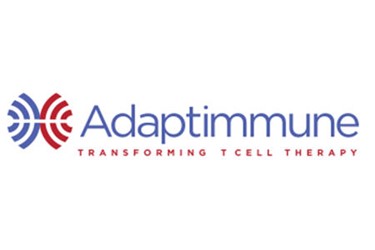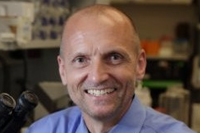Part 2: Adaptimmune's Deep Dive into Manufacturing & Process Development

By Erin Harris, Editor-In-Chief, Cell & Gene
Follow Me On Twitter @ErinHarris_1

In Part 1 of our two-part series with Adaptimmune, CEO James Noble, who has announced his retirement since the publication of this article, provided thoughtful insight on the status of combatting solid tumors as well as the ongoing pricing issue affecting the cell and gene therapy sector. Here in Part 2, along with John Lunger, SVP, Manufacturing and Supply Chain, and Mark Dudley, SVP, Product Development at Adaptimmune, we dig deeper into the topics discussed in Part 1 — we shed granular light on how pricing will affect manufacturing; we talk outsourced versus in-house manufacturing and more.
New Methods of Manufacturing
In Part 1, Noble discussed how the pricing of cell therapies will come down because the cost of manufacturing will decrease and there will be completely different manufacturing methods. So, what are these different methods of manufacturing? Lunger explains that Adaptimmune is constantly assessing new technologies for their applicability to their manufacturing process and supply chain. “Technical innovation in equipment (bioreactors), supplies (media) and information management (bar coding and “big data” analytics) are improving manufacturing process as well as the safety and potency of the cell product,” he says. “New equipment and rapid data analytics enable the implementation of automated operations, increasing process reliability and throughput. Process improvement to “close open steps” and digitally capture data reduce the sterility risks to our product, which cannot be sterile filtered, and reduce vein-to-vein time by simplifying product release. Future efforts aim at the adoption of cutting-edge technology for cell separation, gene transfer, activation, and characterization that may reduce the dose while improving potency.”

Note that both cell and gene manufacturers and equipment manufactures are developing these new methods. However, the need for and the offer of new manufacturing and processing technologies are evolving rapidly and constantly, which requires cell and gene therapy manufacturers to be able to quickly and effectively assess new technologies for their applicability to their own products.

But, how will these new methods help decrease the cost of manufacturing? Lunger explains the current process changes improve CoGs in several ways. “First, automation will enable more throughput with the same/less direct labor. Second, simplifying the process and reducing “open steps” will enable a decrease in the manufacturing and “vein to vein” cycle time. As a result, more patient batches can be processed in a given period with greater reliability. Third, optimizing the inputs of raw materials, in particular high cost materials such as the viral vector, will reduce direct costs per patient batch. And finally, improving product potency allow the reduction of total cell dose to achieve equivalent clinical outcomes, reducing manufacturing costs.”
Lunger also states that when it comes to estimating how these new methods will decrease the price of cell therapies, specific numbers are hard to estimate. “If you look at the reduction in CoGS that biologics/MaBs have experienced from the early days of the technology to now, we believe we could anticipate similar improvements,” he says. Biologics manufacturing typically generates inventory that can be stockpiled for CMC risk mitigation. Autologous cell therapies always rely on a “just in time” approach for which a production run is typically the only product available to a patient. Despite these divergent manufacturing approaches, several lessons from biologicals can be applied to autologous C> treatments. A phase-appropriate quality control strategy, prospective capacity/demand planning, and “quality by design” principles were developed before C> products and are important to apply in an integrated C> manufacturing and supply network.
From Academia to Commercialization
It’s a tremendous challenge to scale-up cell and gene therapies from an academic setting to commercialization. “Cell and gene therapy is a complex process, and since it is still new, there is relatively little expertise in the market,” Dudley states. “Therefore, our advice would be to start early to develop the manufacturing and supply capability, either internally or externally, while establishing a culture that embraces nimble, “fit-for-purpose” quality lifecycle management (QLM) principles. Exploratory clinical trial sponsors (including academic sites) should fully integrate CMC and clinical operations to enable the most rapid product development. Clinical sponsors should maintain flexibility to improve the process and product while de-risking the supply chain and scaling manufacturing. Commercial activities require optimized supply execution in global markets and should engage patients and physicians to improve the “customer” experience. This approach is working well for Adaptimmune.” “Hindsight is always 20/20, but the one thing would you have done differently from the start with manufacturing is that we would have likely invested even earlier in our CMC growth and internal capability development,” says Lunger.
The Pros and Cons of Working with Partners
Adaptimmune currently has dedicated space and personnel set up with two CMOs: PCT Hitachi in the Navy Yard (Philly) and the Cell and Gene Therapy Catapult in the UK. These are two different models. “While PCT Hitachi is a more traditional CDMO, where their staff do the manufacturing on their equipment, C> Catapult in the UK is more of an incubator model, where they support innovation by providing the facility and some infrastructure, but the manufacturing is done with Adaptimmune people and equipment,” states Dudley. “The C> Catapult approach enables us to develop the organizational capability for internal manufacturing, potentially at our own facility in the future, without the initial infrastructure investment. Another difference between what we do with each is that we are developing viral vector manufacturing at C> Catapult, whereas with PCT Hitachi is SPEAR T-cell drug product manufacturing. External CDMOS, when combined with internal capability provide some level of flexibility and supply risk mitigation. This is something to consider carefully for autologous cell therapy products.”
CMOs Vs. In-House Manufacturing
As expected, in-house manufacturing versus CMO is a bit of both and something else entirely. “Autologous products must obviously be thought of differently than allogeneic, but even more so when you consider autologous products in the cancer field, compared to other therapeutic areas,” says Dudley. “The reason is that rapid manufacturing cycle time and flexibility, to work around patient treatment schedules, is paramount to successful trials and products, because patients currently treated with our therapies are heavily pre-treated and need access to treatment options quickly.” In addition, the ability to access new technologies to improve manufacturing operations and product efficacy, and the rapid implementation of process improvements are key to cell and gene therapy success. Being in control of these activities is enabled by in-house capabilities.
Bigger, Better, Faster — How to Bring Therapies to Market Quickly and Cost Effectively
Lunger and Dudley state that a difficult issue for cell and gene therapy is a need to better understand the mechanism of action for cellular immune products. “Development of a simple potency assay that predicts therapeutic safety and efficacy would enable developmental activities and regulatory filings to help scale commercial manufacturing,” they explain. “Inexpensive and reproducible analytical tools that enable correlative studies, biomarker identification, and product improvements would accelerate cell and gene therapy adoption and technology dissemination.”
